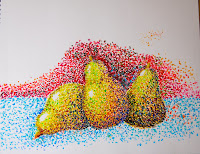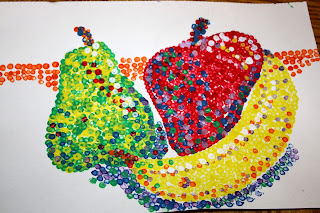viernes, 11 de abril de 2014
miércoles, 2 de abril de 2014
How to make a good SPEECH
http://www.wikihow.com/Make-a-Good-Speech-for-School
http://www.ourspeeches.com/ click on this one to learn more about speech
http://www.ourspeeches.com/ click on this one to learn more about speech
Writing a speech
Standard English
Standard English is the style of English grammar, spelling and vocabulary that is widely accepted in spoken and written English. In formal speaking and listening situations, you will need to communicate using Standard English, eg when writing or giving a speech.
Speeches
The key to presenting the perfect speech is preparation and practice. World leaders don't just stand up and make up a speech on the spot - they carefully prepare beforehand. They even employ people to write their speeches, although remember, this is not an option at school!
An effective speech needs to:
- Use the English language skilfully - as you have time to prepare your speech in advance, you can show off your English language skills and vocabulary.
- Be memorable - former prime minister Tony Blair was famous for making a speech that included the phrase "Education, education, education". This use of repetition made the speech memorable and helped his audience identify his key point.
- Make people think - you may have heard of Martin Luther King who repeated the phrase "I have a dream" when he campaigned for equal rights for black Americans. This was a speech designed to inspire and connect with his audience.
- Parts of a SpeechBefore you can write a speech, you have to know a little about speech construction. There are certain types of speeches, and each type contains certain characteristics.Just like essays, all speeches have three main sections: the introduction, the body, and the conclusion. Unlike essays, speeches must be written to be heard, as opposed to read. You need to write a speech in a way that keeps the attention of an audience.This simply means that your speech should contain a little color, drama, or humor. It should have “flair.” The trick to giving a speech flair is using attention-grabbing anecdotes and examples.Since there are different types of speeches, your attention-grabbing techniques should fit the speech type.
Types of Speeches
Informative speeches inform your audience about a topic, event, or area of knowledge.- Podcasting for Teens
- Drinking Is for Dummies
- The Underground Railroad
Instructional speeches provide information about how to do something.- How to Shape Perfect Eyebrows
- Make a Great Bag Out of Old Clothing
- How to Stand on Your Head
Persuasive speeches attempt to convince or persuade the audience.- Study Abroad is Life-Enhancing
- Abstinence Can Save Your Life
- Benefits of Volunteering
Entertaining speeches entertain your audience.- Life Is Like a Dirty Dorm
- Can Potato Peels Predict the Future?
- Marshmallows Should Be a Food Group
Special Occasion speeches entertain or inform your audience.
martes, 1 de abril de 2014
POINTILLISM TECHNIQUE
Pointillism /ˈpɔɪntɨlɪzəm/ is a technique of painting in which small, distinct dots of pure color are applied in patterns to form an image. Georges Seurat and Paul Signac developed the technique in 1886, branching from Impressionism. The term Pointillism was first coined by art critics in the late 1880s to ridicule the works of these artists, and is now used without its earlier mocking connotation.[1] Neo-impressionism and Divisionism are also terms used to describe this technique of painting called pointillism.[








Suscribirse a:
Comentarios (Atom)
